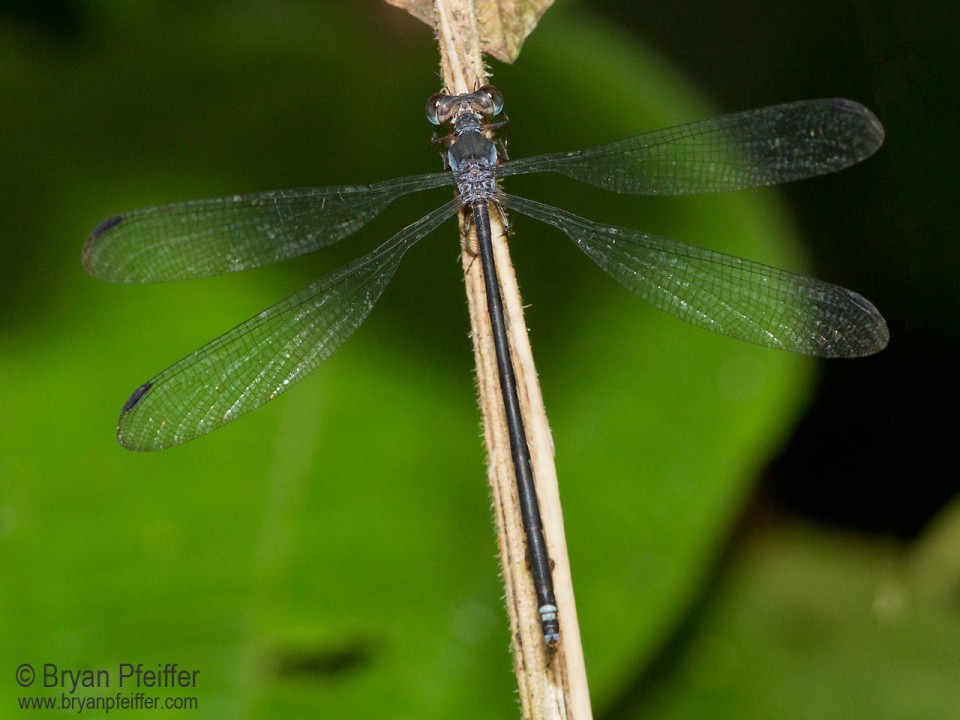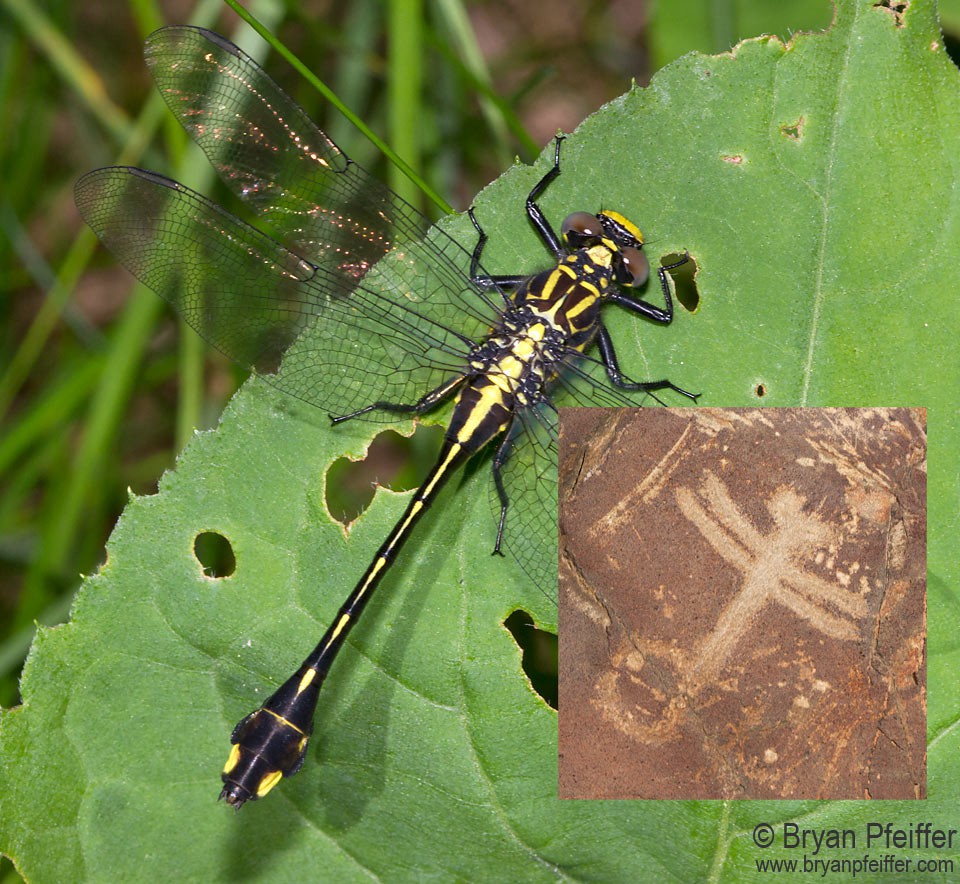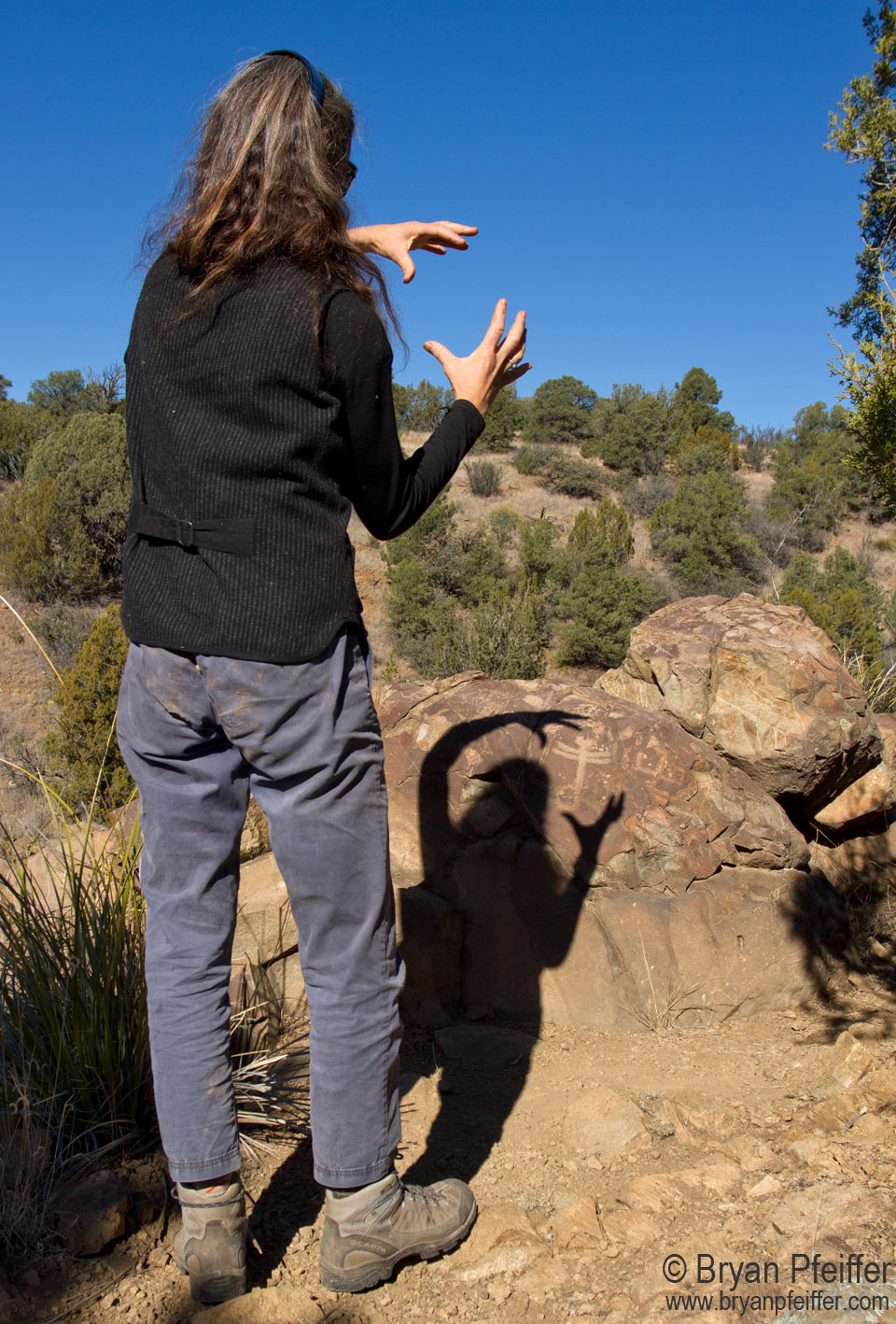A Thousand-Year-Old Dragonfly
Here in the Chihuahuan Desert, where water is scarce and sacred, I find no better icon for the fertile intersection of land and water than a dragonfly etched in rock.
Borne of water, and a force of nature on the wing, dragonflies command wet and arid provinces like few other animals. So it is no wonder that the Mimbres people left this petroglyph beside a creek here in southwestern New Mexico about a thousand years ago.
Ruth and I, encamped for the month in a cabin beside the Gila River, at the foot of the Gila Wilderness, occasionally find reminders of the Mimbres culture, mostly in pottery our hosts have found on the property over the decades. But this dragonfly, off a trail on a hike near Silver City, brings me even closer to the Mimbres.
As a naturalist, I wonder what species might have inspired this particular petroglyph.
I begin with the head. Its shape suggests the widely separated eyes of a damselfly — a head that looks a bit like that of a hammerhead shark. The wings, of equal size and shape, also suggest a damselfly rather than a dragonfly. Damselflies belong to the suborder Zygoptera, meaning paired wings: forewings and hindwings roughly the same. Consider this flatwing species, Costa Rican Flatwing (Philogenia carrillica), from — yeah, you guessed it — Costa Rica.
Except we’ve got at least one problem with the damselfly hypothesis: none of our North American damselflies holds its wings flat like this. At best, you’ll see a dihedral (a “V” posture”) among the Lestes (Spreadwing) species. Lestes, widespread on the continent, might have inspired this petroglyph.
But let’s also consider the big and the obvious — the dragonflies, which hold their wings flat, and plenty of which would be flying in this creek (all but dry yesterday) during the summer monsoons here.
The American Southwest (and lots of other places) does have a dragonfly family with widely separated eyes: the Clubtails (Gomphidae). Here’s a Cobra Clubtail (Gomphus vastus) from Wisconsin. Note how the brown eyes don’t touch on the head, unlike other dragonfly groups (except for the Petaltails [Petaluridae], which don’t make it to the Southwest). Creeks like this one in New Mexico would certainly host some striking clubtails, among many other dragonfly species.
Now, look at the posterior end of our petroglyph to find … a circle.
Or is it a club?
To be sure, I might liken that circle to the club on a clubtail — the swollen tip of the abdomen characteristic of this dragonfly family. On some, including a few species in the Southwest (none of which I’ve managed to photograph, which is why we’re looking at an example from Wisconsin), the club is pronounced like a skillet.
So perhaps we’re getting close to the model species for this petroglyph — a clubtail.
Or perhaps not.
We need not go much further in this analysis. Maybe this icon is indeed just that — iconographic, meant to symbolize the essence of dragonfly rather than any particular species. It might signify even more. That loop at the abdomen tip of our petroglyph, I suspect, symbolizes the circle of life.
The Mimbres added loops and arcs to many of their depictions of animals. It’s a fitting symbol for a dragonfly, which grows up in water, then emerges to hunt and mate and die over land, before leaving its eggs in water to complete the circle.
So I’ll leave you with only one more image — another arc — for a sense of scale during our visit yesterday with this dragonfly: Ruth encircling our petroglyph, touching it, capturing it … with nothing but her shadow.





The Dragonfly Trailhead is just east of Silver City, NM off of Hwy. 180 (N. on Arenas Valley Rd). Check out the Gila Forest Ranger Station (nearby in Silver City) for a trail map. It’s an easy 3 mile hike round trip. Very little shade, so bring lots of water, sunscreen and a hat. A lovely way to spend a couple of hours!
Exactly where is this sire?
please add me to your mailing list.
Beautiful pictures and write up. Since it is a known trail would you be willing to share the site. I too love photographing petroglyphs and pictographs.
Oh, it was a known site. Thanks for asking, Ginny. Sorry about any confusion. And thanks for the kind words. Happy Holidays!
I’m curious, Bryan. Did you and Ruth just happen upon this dragonfly, or is it a known spot? I love the analysis and the photos! Have a great holiday!
Thanks, John. Keep Montpelier warm for us! Or wintery!
Thanks, Barbara. No point-and-shoot for that one. Just the big gear.
Thanks, Steve. Gotta get back there when odes are flying.
That’s gotta be it. Brilliant!
A fine story and reasoning Bryan.Also the images.
Lovely pictures (& text), Bryan!
I’m not in the NE Odes Facebook group so couldn’t post there. I think it’s Aridothemis petrophilus.
Lovely! Just lovely. The writing, the exploration of ideas and, of course, Ruth’s shadow hands. Thanks—once again!